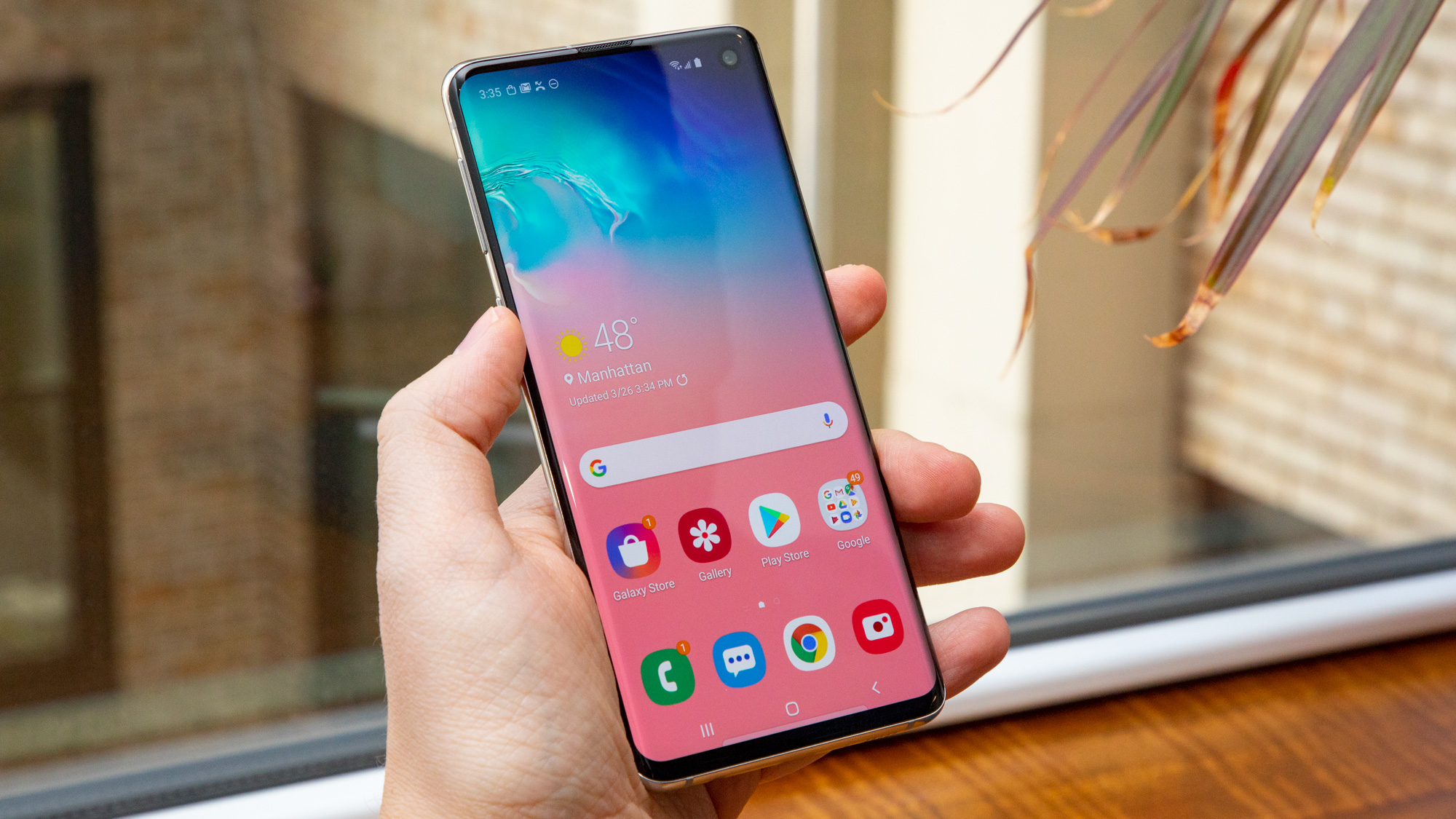
Samsung Galaxy S11 release date, price, news and leaks
by Tom BedfordSamsung Galaxy S11 release date, price, news and leaks
A whole Galaxy of potential
Samsung's Galaxy S10
We're not expecting to see the Samsung Galaxy S11 release for a while since, if Samsung continues its yearly cycles for phone releases, it will be out in or around February 2020 – but we're already hearing rumors of what we can expect from it.
On top of that there are some features we didn't see in the Samsung Galaxy S10 that we were expecting, and there were aspects of the Samsung Galaxy Note 10, Samsung Galaxy A80 and Galaxy Fold that would work well in a new Galaxy S flagship.
Inspired by all these phones, we've also drawn up a list of the things we'd like to see in the Samsung Galaxy S11, or whatever the next Galaxy S phone ends up being (it could be the Galaxy S20, given that phone companies seem to jump straight from 10 to 20 when numbering phones).
You'll find that below, but first, here's everything that we've heard about the Samsung Galaxy S11 so far.
Latest news: A screen protector supposedly made for the Samsung Galaxy S11 shows off the likely design, including tiny bezels and a repositioned front-facing camera.
Cut to the chase
- What is it? The next Galaxy S smartphone from Samsung
- When is it out? Possibly February 18
- What will it cost? Likely more than $899 / £799 / AU$1,349
Samsung Galaxy S11 release date and price
We saw the Samsung Galaxy S10 release alongside the Samsung Galaxy S10e and Galaxy S10 Plus in late February 2019. Since Samsung tends to release its phones in yearly cycles, we expect to see the Samsung Galaxy S11 release in February or March 2020.
That may mean we hear about it at MWC 2020, or it may be a touch earlier as one rumor suggests we might see it on February 18. Another source meanwhile has claimed it could land on February 11. It's quite early to hear about an actual launch date though, so we'd take both dates with a big pinch of salt.
The Galaxy S10 cost $899 / £799 / AU$1,349 for its cheapest storage size, and went all the way up to $1,149 / £999 / AU$1,699, when it released.
We would expect the Samsung Galaxy S11 price to be a small increase on this, as the Galaxy S10 was pricier than the Galaxy S9.
Taking into consideration the usual price increases on Galaxy S handsets between generations, we'd expect to see it cost around $1,000 / £900 / AU$1,500 for the cheapest version, and even more for more memory.
Having said that, we're talking about the standard Galaxy S11 here, but a rumor suggests there might be a Samsung Galaxy S11 Lite (if it doesn't launch earlier as the S10 Lite), in which case there might be a cheaper option for buyers who don't have a grand to spend on a smartphone.
Samsung Galaxy S11 design and display
We've now seen leaked renders supposedly showing the Samsung Galaxy S11, Galaxy S11 Plus, and Galaxy S11e.
Starting with the standard model, which you can see above, the screen is apparently between 6.63 and 6.7 inches in size and slightly less curved than the S10's. The bezels also appear slightly smaller, and on the back there's a camera block which appears to house five lenses.
Dimensions meanwhile apparently come in at 161.9 x 73.7 x 7.8mm (rising to 8.9mm at the camera bump), which would make it larger than the 149.9 x 70.4 x 7.8mm Galaxy S10.
Next up there's the Samsung Galaxy S11 Plus leaked renders (pictured below), which show a similar design but an even larger camera block, plus an apparently 6.9-inch screen and dimensions of 166.9 x 76 x 8.8mm (rising to 10.2mm at the camera bump). The Samsung Galaxy S10 Plus for comparison is 157.6 x 74.1 x 7.8mm.
We would however take these with a pinch of salt, as another leaker has said they're inaccurate and that the actual design will be quite different to the S10 Plus.
As for the Samsung Galaxy S11e renders, these show a similar design once again, but with the smallest camera block of the bunch (housing three lenses), a screen of apparently 6.2-6.3 inches, and dimensions of 151.7 mm x 69.1 mm x 7.9mm (without the camera bump).
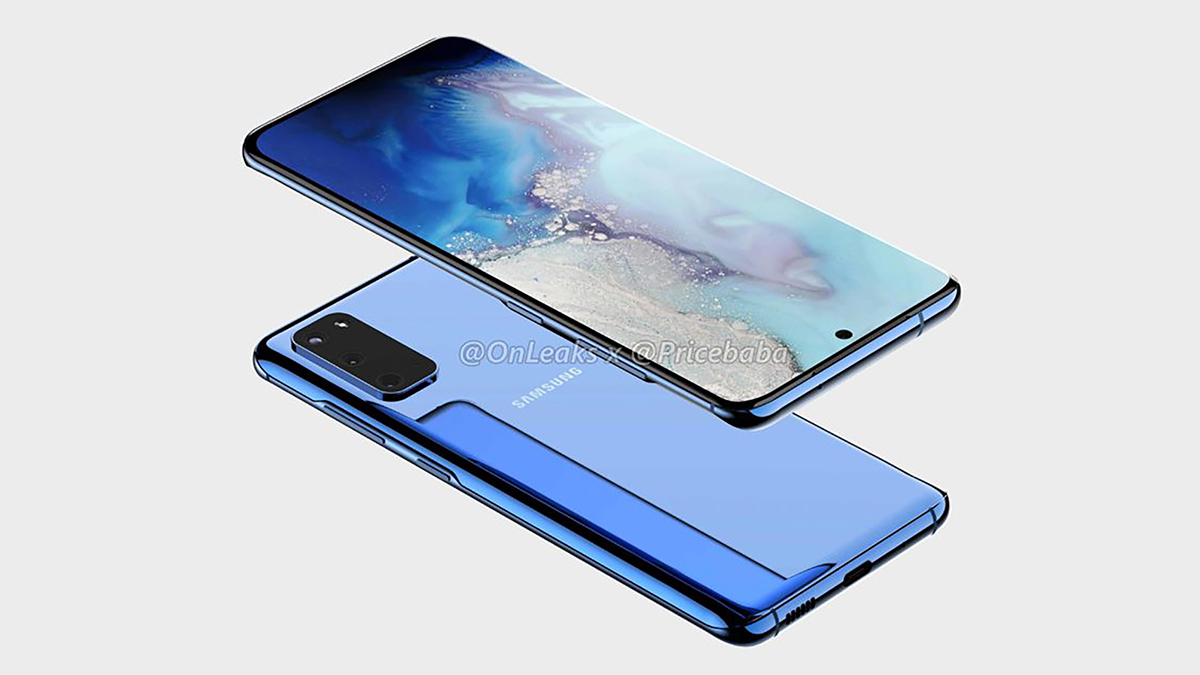
We've also now seen renders of cases for both the Samsung Galaxy S11 and Samsung Galaxy S11e which completely line up with the leaked designs above.
Similarly, we've also seen a screen protector that's apparently designed for the Galaxy S11 and shows the same design again - most notably a centered punch-hole camera and tiny bezels.
That all suggests these designs may well be accurate, though it's equally possible the case designs and screen protector are based on the leaks above.
Prior to all this we heard from one of the more reputable tipsters on the web that the screen sizes of the Galaxy S11e, Galaxy S11 and Galaxy S11 Plus will be 6.4 inches, 6.7 inches and 6.9 inches – and that they're all going to come with curved screens. That's broadly in line with the leaks above.
They might also have a 120Hz refresh rate, offering smoother interactions than the 60Hz found on the S10 range. That theory is mostly based on a 120Hz mode being spotted in a beta for Samsung's smartphone software. There's no guarantee the feature will arrive on the Galaxy S11 range, but it seems a likely candidate, especially as a source has now said as much.
Plus, a browser test for an unknown Samsung phone believed to be an S11 model points to a 20:9 aspect ratio. That would make it more widescreen than the 19:9 Galaxy S10 (or taller when held in portrait orientation).
The S11 could also use a new screen tech, as Samsung has trademarked the name SAMOLED, which sounds like a new take on the AMOLED screens used by its phones, though we don't know how SAMOLED would differ.
We've also heard that the Samsung Galaxy S11 could move the punch-hole camera to the top center of the screen, similar to the Galaxy Note 10 range, as we've since seen in leaked images. The source adds that the camera would be smaller than on the Note 10 range though. You can see how this might look in the images above and the one below.
The same source has since added that the Samsung Galaxy S11 will apparently have a narrower bezel than the Galaxy Note 10, but apparently won't have a 'waterfall' screen (that being a very steeply curved screen edge like the Huawei Mate 30 Pro has).
There's also an outside chance that the Galaxy S11 will have two screens, as Samsung has patented a design (spotted by LetsGoDigital) with a smaller second screen on the back of a phone, as you can see below.
This would remove the need for a selfie camera, as the second screen could be used to frame photos using the main camera. We doubt we'll see this design though - all sorts of things get patented and often don't get made.
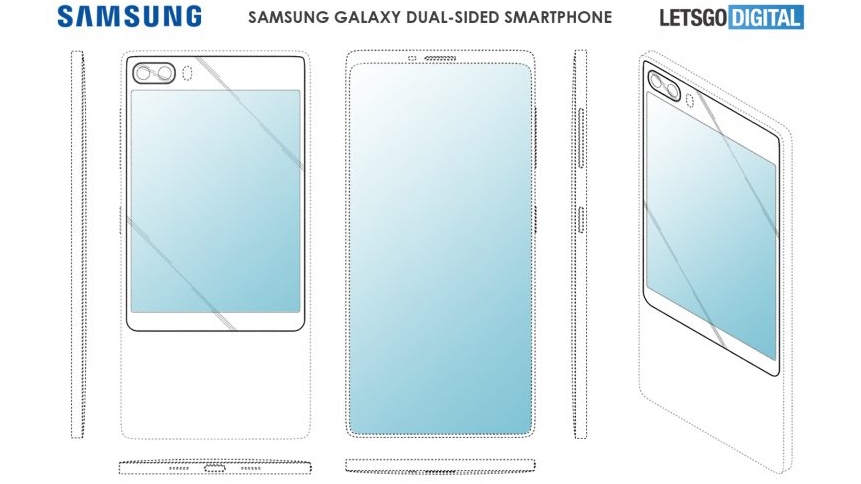
As for the rest of the design, one thing we've heard is that the standard Galaxy S11 might come in blue, grey and black shades, while the Samsung Galaxy S11e might come in blue, grey and pink. The source doesn't say what colors to expect the Samsung Galaxy S11 Plus in though.
Samsung Galaxy S11 camera
Samsung has announced new 48MP and 64MP camera sensors , so it's possible Samsung will use one of them for the Galaxy S11.
However, Samsung might go even further, as it has also now announced a 108MP sensor, one which has been specifically rumored for inclusion in the Galaxy S11. The source of this rumor adds that the Samsung Galaxy S11 will apparently also have a lens with 5x optical zoom.
Elsewhere, another leaker has also said that Samsung will probably use a 108MP camera in the Galaxy S11, but this will apparently be a new one, rather than the sensor Samsung has already announced. This is a rumor that's now starting to gain some serious momentum.
We're not sure what upgrades it would get, but with Samsung's first 108MP sensor likely to land on a Xiaomi handset this year, it would make sense for Samsung to make something totally new for the Galaxy S11.
A 5x optical zoom lens is looking ever more likely too, as a source claims the S11's camera is codenamed 'Hubble'. That's the name of a space telescope, so strongly suggests impressive zoom skills. Plus, another source has also pointed to a 5x optical zoom lens, but said that the phone won't have a 'normal' one, whatever that means.
One thing it might mean is that the lens is more flush with the back of the handset than most zoom lenses, as another source claims Samsung is working on just such a lens - which is also yet more evidence that a zoom lens is in the works.
Alternatively, it could be referring to a focus on photographing the night sky, as not only is the camera apparently codenamed Hubble as mentioned, it might also have a 'Space Zoom' feature, which Samsung has applied to trademark.
Samsung's description of the feature makes it sound like a general zoom mode, but the name certainly suggests it could be designed to take better photos of stars, planets and the moon.
Samsung has also trademarked a 'Bright Night Sensor', which sounds a lot like a low light mode, but one that the sensor is designed from the ground up for (so in other words it uses hardware rather than or as well as software).
Coupled with these night sky focused features it sounds like the Galaxy S11 could put a real focus on low light photography - though there's no guarantee the trademarked features will be used with the Galaxy S11.
One thing we might not get is an in-display front-facing camera, as while the likes of Oppo and Xiaomi are already teasing the technology, a source suggests Samsung will wait for the tech to "mature" first, and in the meantime will stick with punch-hole cameras - albeit ones of ever smaller sizes.
With regards to video recording, a rumor has suggested that the Samsung Galaxy S11 will support 8K video recording, however there are reasons why that rumor might be incorrect, such as the 108MP sensor not actually supporting that resolution.
Samsung Galaxy S11 specs and features
On the topic of 'tech Samsung has announced': we know the company has created a 12GB Mobile DRAM, which lets the phone read memory at a quicker rate, so that's an obvious candidate for the Galaxy S11.
The Galaxy S11 might also be the first phone to have a tiny 5nm chipset, according to Sina, which could see it outperform other handsets.
Speaking of the chipset, one believed to be the Snapdragon 865 has been benchmarked with scores that beat any other phone. It's likely that US versions of the Galaxy S11 will use this chip, so that's promising.
A more unlikely feature that the S11 could pack is a spectrometer, which could be used to determine the chemical composition of objects. Samsung has patented a phone-like device with just such a feature, so it's possible, but it sounds a bit far-fetched and niche.
In other news, it may be worth keeping an eye out for rumors and leaks regarding the 'Picasso' as that, according to leaker Ice Universe, is the code-name Samsung is currently using internally for the Galaxy S11.
We can also look to the Samsung Galaxy Note 10 for some possible specs and features. The Galaxy S10 for example probably won't have a headphone port, since Samsung has ditched it for the latest Note. Similarly, it likely won't have a Bixby button.
However, by freeing up space that would have been used for a headphone port, Samsung could potentially make the battery bigger and/or the body thinner.
In fact, one rumor suggests the Galaxy S11e will have a larger battery than the Galaxy S10e. It may be because this is a 5G version of the device, but it seems to suggest that Samsung will be increasing battery capacity on its next series of devices.
Speaking of 5G, according to a source you'll be able to get the Galaxy S11 and S11e in either 4G or 5G versions, while the Samsung Galaxy S11 Plus will apparently only be offered as a 5G phone.
We've also now seen evidence of at least one Galaxy S11 handset offering 5G, as mention of it was found on a certification listing for a phone with a model number linked to the S11 range. Surprisingly though it also listed fast charging of up to 25W, which would make it slower than the 45W Samsung Galaxy Note 10 Plus.
There's also unlikely to be a fingerprint sensor, judging by the news that the Galaxy S11 could use facial recognition unlocking tech instead. The iPhone 11 and Google Pixel 4 have similar systems, where instead of using in-screen fingerprint sensors, they use facial recognition, and this is a rather secure form of unlocking (compared to Samsung's current photo-based facial recognition) but it's slower than using a fingerprint.
How about this for a rumor though: could the Galaxy S line be discontinued, and the Galaxy S11 never see the light of day? That's what one source suggests, that the S11 and Galaxy Note 11 will merge to create the Galaxy One, a new series that combines all Samsung's premium features into one smartphone.
Sure, we've heard that before about Samsung phones and it turned out to be wrong, but given the similarities between both ranges, it's not something we can totally rule out.
Samsung Galaxy 11: what we want to see
While early rumors have started to swirl, in reality there's still a long way to go before we see the Samsung Galaxy S11, which is good news as it gives Samsung plenty of time to take our suggestions on board.
So, listen up Samsung, here's what we want to see from the Galaxy S11. Please don't let us down.
1. Better camera specs
The Samsung Galaxy S10 has three rear cameras: the 12MP main sensor with a regular lens, the 12MP second sensor with a telephoto lens for distance shots, and the 16MP third sensor with an ultra-wide lens.
The three lenses are generally what we'd expect in a smartphone camera, but the resolution of each is a lot lower than in many other phones.
Handsets like the Honor 20 Pro have a 48MP main snapper, which is a big step up from 12MP, and even affordable handsets sometimes now come with four lenses (the extra is usually a time-of-flight or macro sensor for close-up shots), so to stay competitive in the smartphone camera game Samsung needs to up its game with the Galaxy S11.
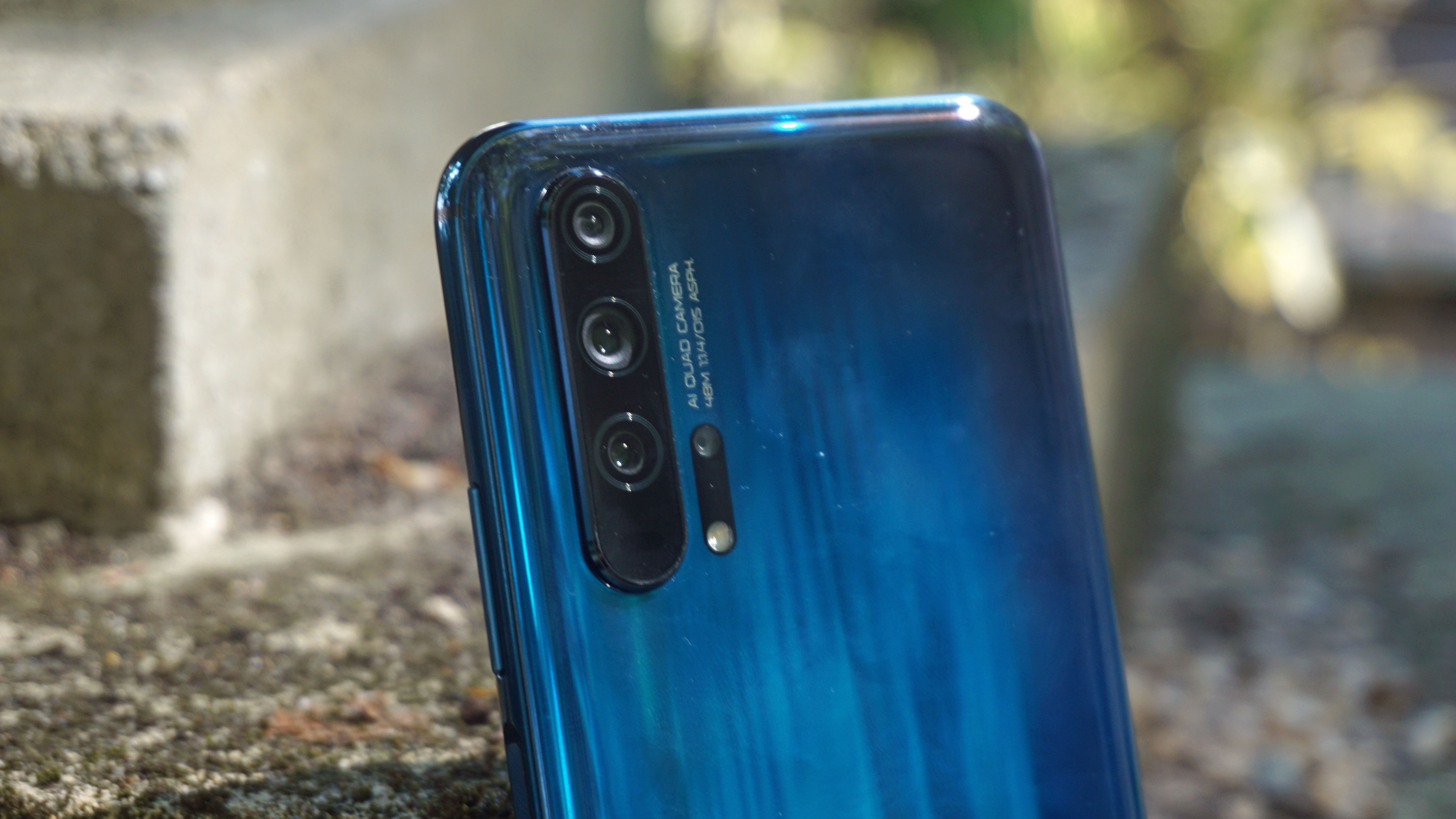
We've heard that Samsung is working on a 64MP smartphone camera that could be put in the Samsung Galaxy S11 – if this is true, the new phone would blow its competitors out of the water.
2. A 3.5mm headphone jack
If you're scratching your head thinking "the Samsung Galaxy S10 does have a 3.5mm headphone jack", then you're right – but it may be the last of its kind.
Newer Galaxy smartphones like the Samsung Galaxy Note 10 and Galaxy A80 have ditched the headphone jack, so it seems Samsung is following suit behind many other smartphone companies in getting rid of the physical headphone port.
But since many, many people still use non-Bluetooth earphones, it's a feature that we'd love to see return in future Samsung smartphones, especially given it's one of the only high-end smartphone manufacturers to still be using them.
3. Different front-facing camera arrangement
The Galaxy S10 was one of the first phones to have a 'punch-hole' front-facing camera, which means the front snapper was in a cut-out section inside the screen, in the corner.
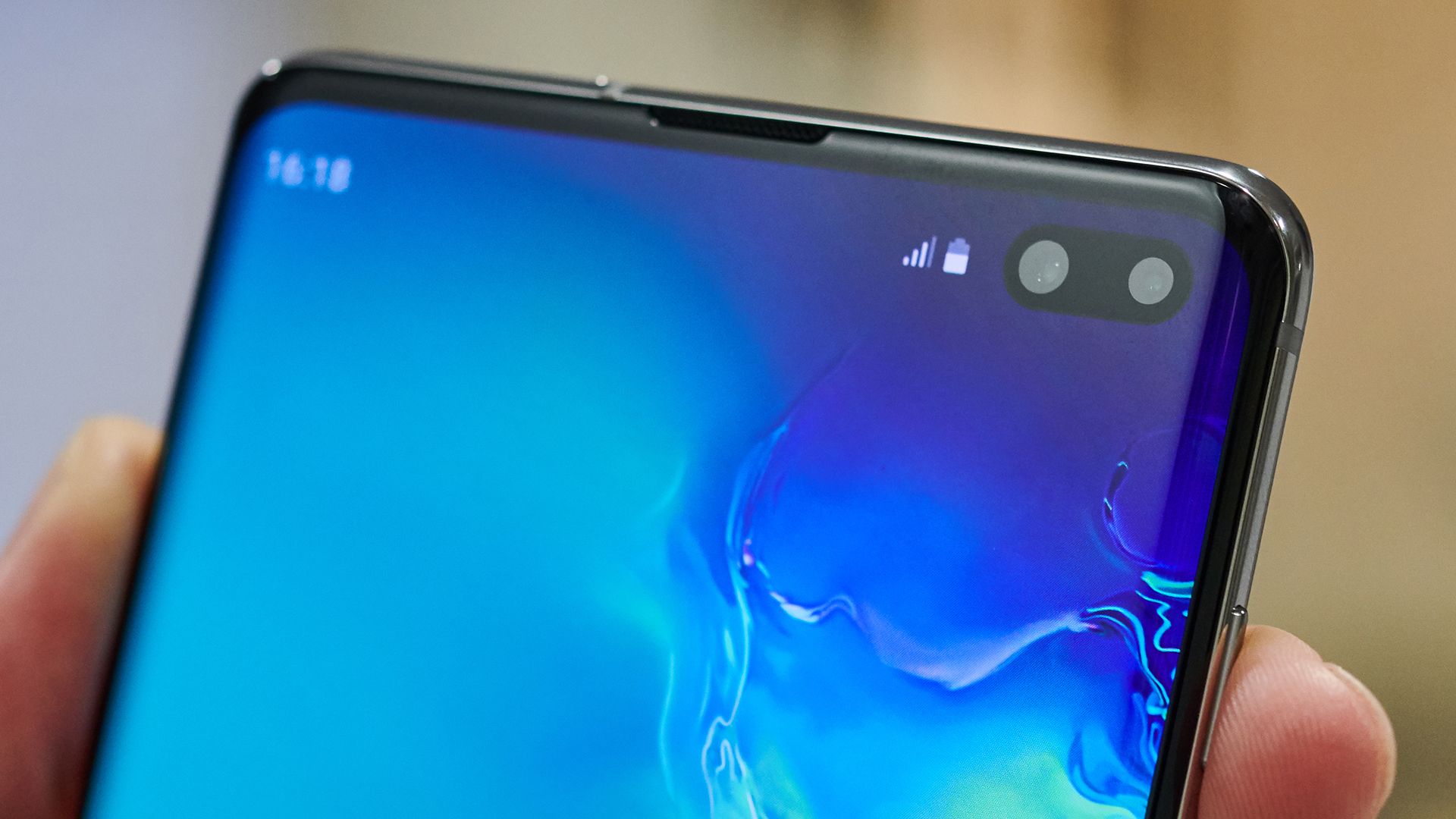
In theory this is a useful feature that replaces the top notch, so you get more screen real estate – but in practice the punch-hole takes just as much space, as there's a sliver of screen between the camera and the edge that just isn't used.
Going forward, we'd like to see the Samsung Galaxy S11 take a different tack – Samsung itself has said it's planning to drop the punch-hole in favor of a camera under the screen, but that could still be a few Galaxy S phones down the line.
4. Greater battery capacity
The Galaxy S10 had a 3,400mAh battery – that's fine, but you've got no hope of that lasting more than a second day of use, especially if you use your phone a lot.
We'd hope the Samsung Galaxy S11 battery life would surpass that – it will definitely have to have a bigger capacity to cater for all the new tech the phone uses, but we'd like to see a serious improvement on the capacity, perhaps 4,000mAh or above.
5. More launch colors
The Galaxy S10 comes in a few colors, most commonly prism white and black – but we always love a vibrant design in a phone, and so far Samsung handsets have often seemed a little dull.
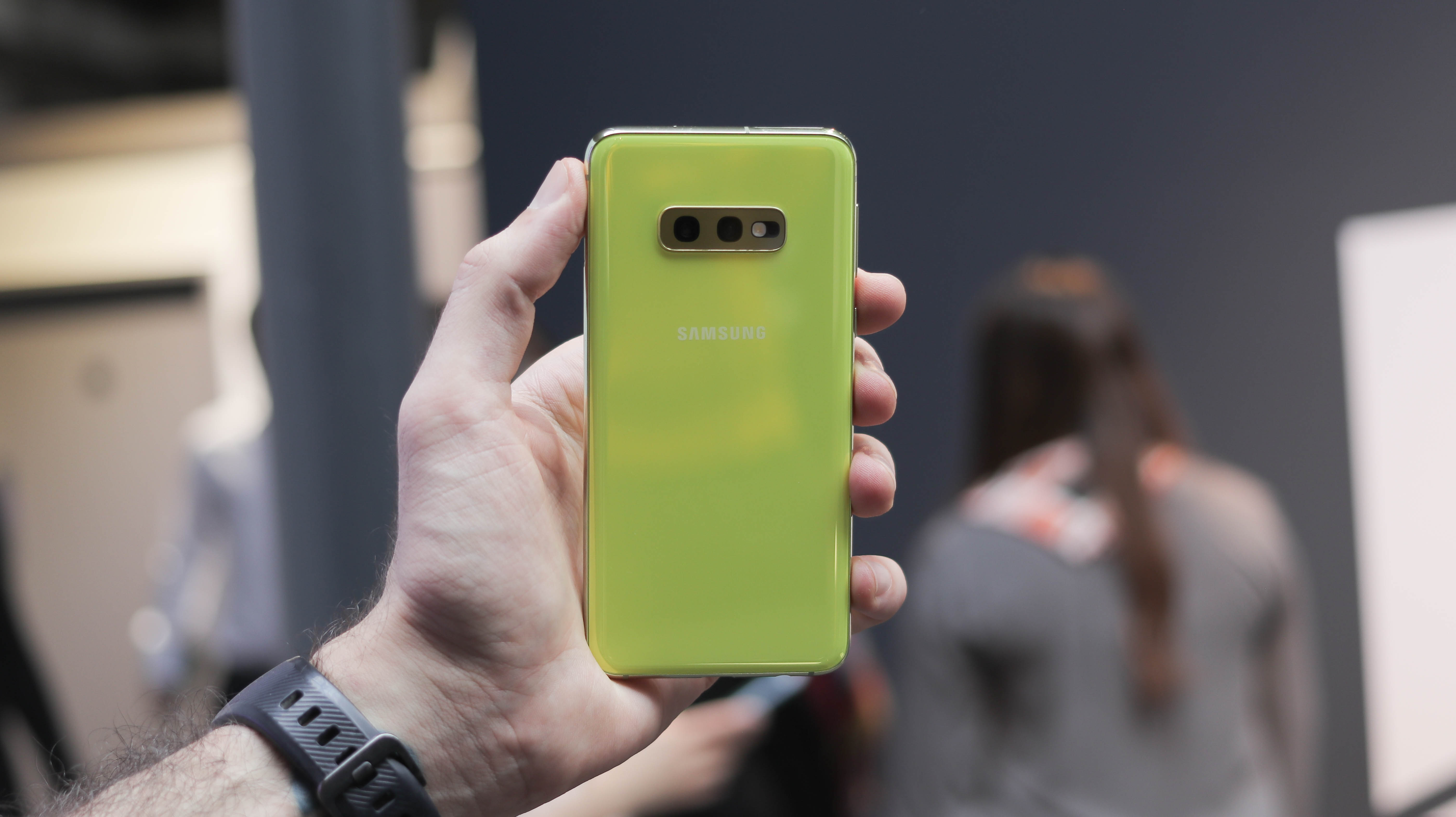
We're not asking for the crazy back patterns of a Huawei or Honor phone, but it would be nice for the Samsung Galaxy S11 to launch in a few different colors.
The Galaxy S10 has a few colors that are only available in certain regions, like yellow, green or red, but if Samsung made these designs available from the get-go in all regions, we'd appreciate the design a lot more.
6. Affordable 5G
We're expecting there to be a Samsung Galaxy S11 5G – there was a Samsung Galaxy S10 5G, after all, and by the time the S11 launches 5G will be available in many countries.
However, the Galaxy S10 5G is even bigger than the Galaxy S10 Plus, and so is massive and expensive. Currently there are no affordable 5G smartphones on the horizon, but Samsung could really get ahead of the curve if the Galaxy S11, or Galaxy S11e, had a low price and ran on 5G networks.
- See what we think of the Samsung Galaxy Note 10